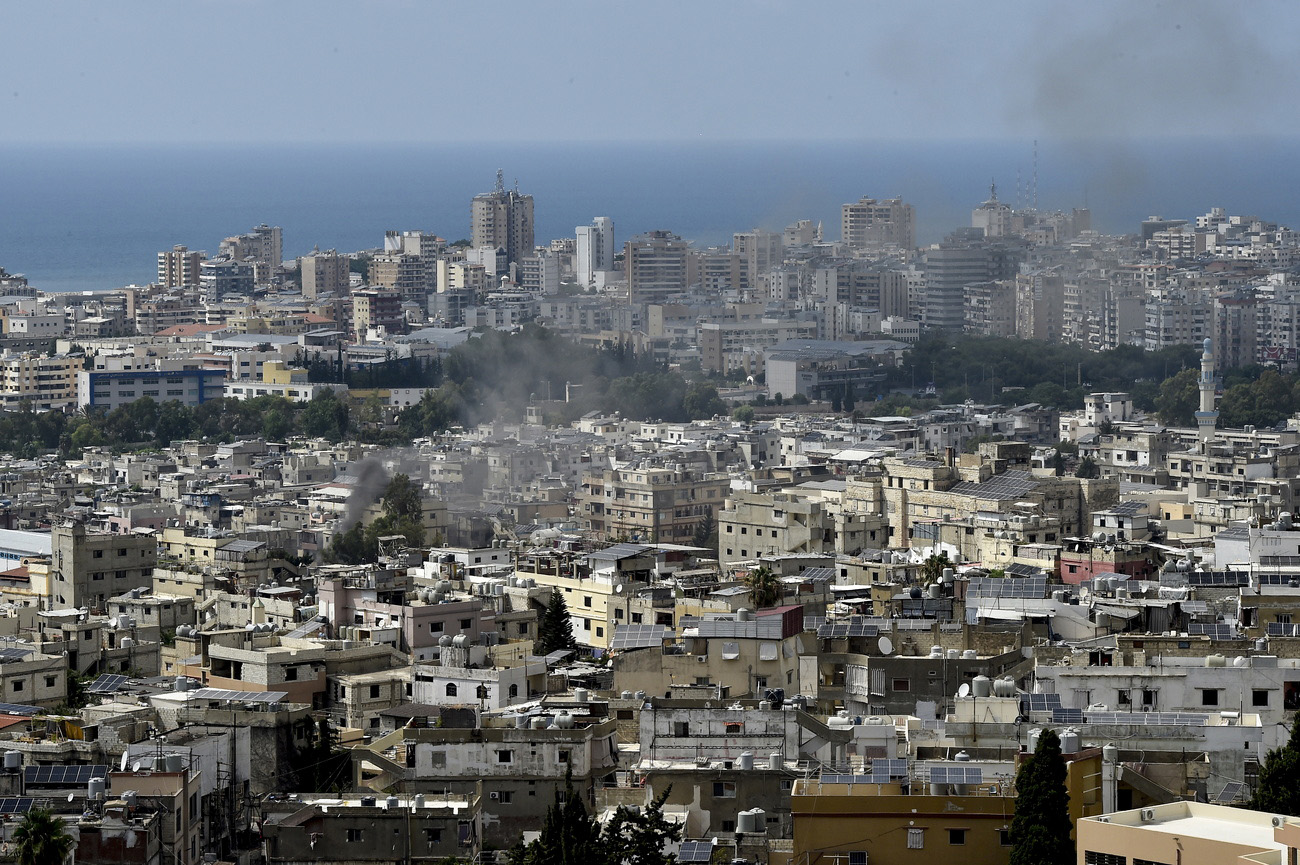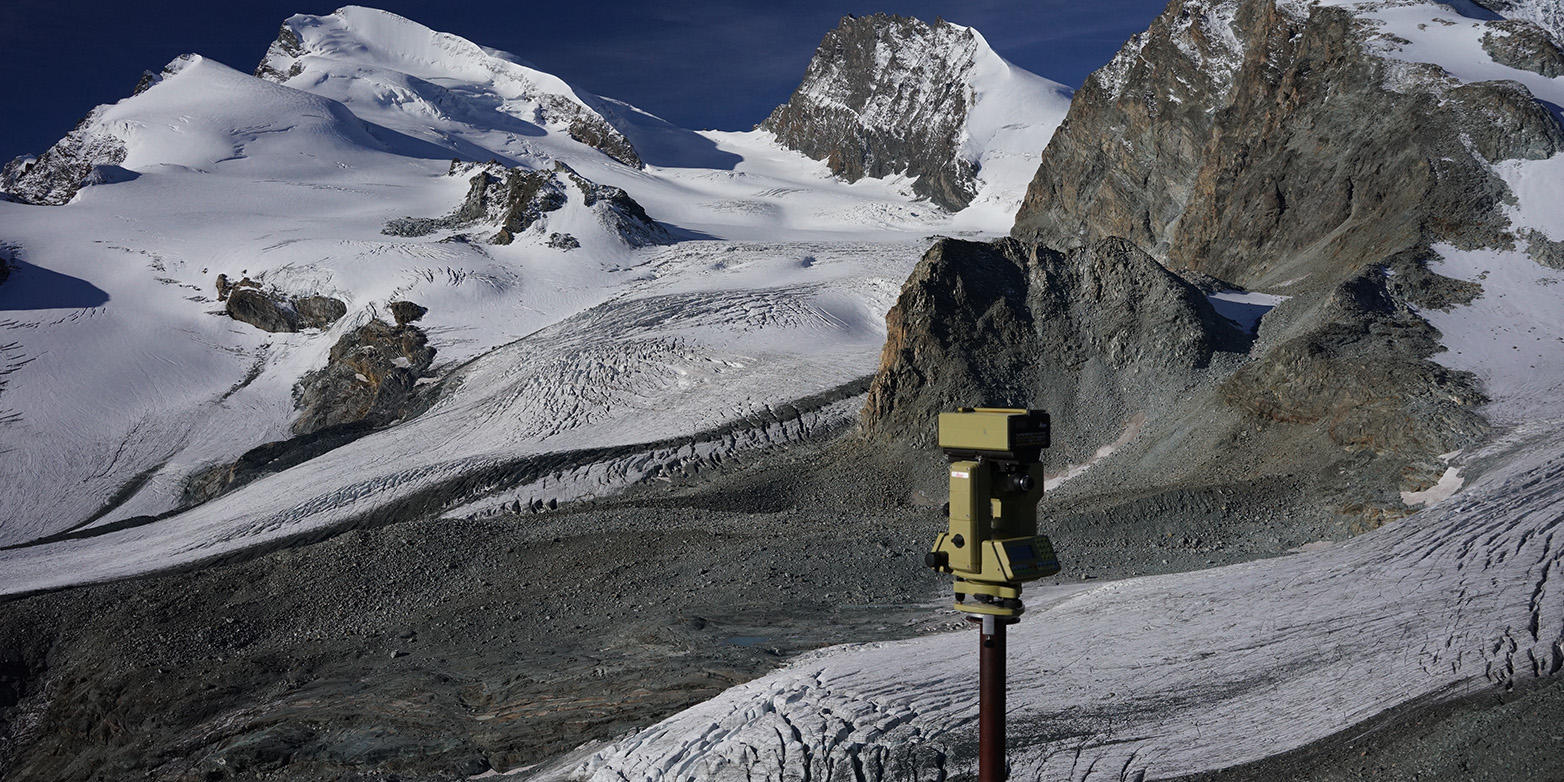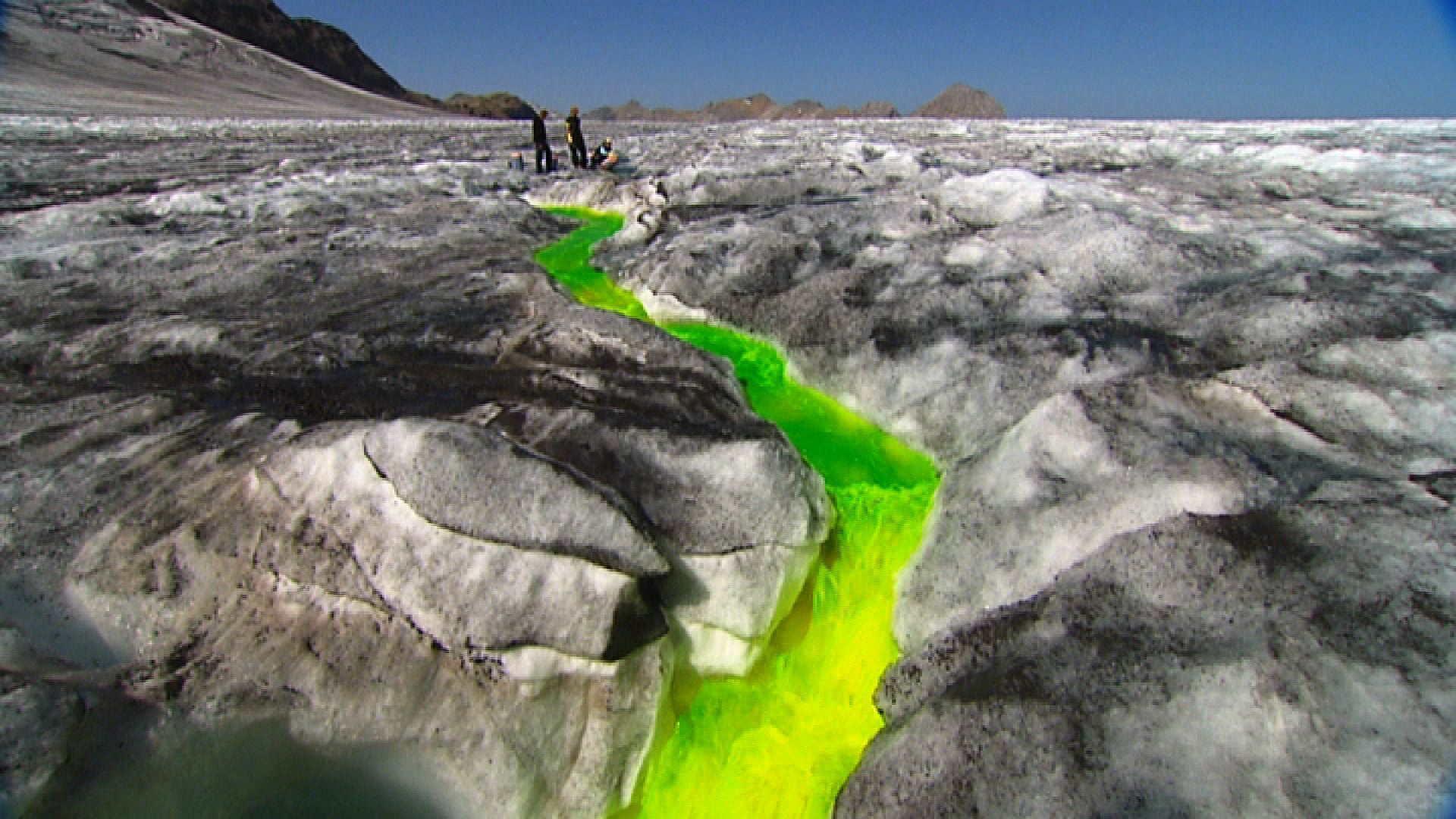
Observing the ‘inexorable death’ of glaciers in real time

Global warming is causing Switzerland’s glaciers to melt. But how fast and with what effects? A new, dynamic glacier inventory makes the impact of climate change and the changing landscape visible.
The last time Swiss glaciers managed to grow was in 2001, according to the federal technology institute ETH Zurich. “Since then, the country’s 1,500 glaciers – as well as others elsewhere – have been suffering a slow but inexorable death,” it said on Monday.
+ Most glaciers in central Switzerland to disappear by 2090
+ A before-and-after gallery of vanishing glaciers
Until now, though, we have understood only partially how quickly the glaciers are really disappearing, and what effect that has on the landscape, people and animals, the scientists say.
That is about to change, thanks to the Swiss Glacier Monitoring NetworkExternal link (GLAMOS) project. GLAMOS is working on behalf of various Swiss federal offices to put together a comprehensive inventory of the country’s glaciers – at an unprecedented level of detail.
“Glacial melt affects the flow rate of our rivers, which makes it a relevant factor in natural catastrophes, disaster prevention, the power supply, transportation, tourism, building sites and not least glacier research,” explains GLAMOS geoinformatics expert Yvo Weidmann of ETH Zurich.
GLAMOS is currently monitoring around 100 glaciers on behalf of various federal agencies. In particular, the focus is on changes in their ice thickness and length. In future, it will gather data on some 1,500 glaciers, helping future researchers to track even the tiniest changes.
From maps to a digital 3D model
What makes the new inventory possible is a “paradigm shift” at the Federal Office of TopographyExternal link (swisstopo), according to ETH Zurich.
swisstopo has spent several years painstakingly converting its maps into a digital 3D landscape model. “The earlier maps show – to put it simply – where things are, but this basic view was of no use in glacier research,” ETH Zurich said.
Glaciers can be covered by debris, which is relevant for glaciology. “It’s possible for a major proportion of a glacier snout to be hidden by debris, with the visible body of ice representing only part of the actual glacier,” Weidmann said.
Now for the first time, swisstopo’s new landscape model also records glaciers according to glaciological rules. For instance, it is sometimes the case that two glaciers, located on opposite mountain flanks and with opposing directions of flow, will meet along a mountain ridge. From a cartographical viewpoint, this would be treated as a single large area of ice. But from a glaciological viewpoint, these are two “individuals” that have little in common and no effect on each other – apart from where they brush against each other on the mountain ridge.
“In future, glaciers will be given a unique number to make their history traceable,” Weidmann explained. “Should a glacier with two catchments in two different valleys melt to the extent that it becomes two independent glaciers, one of them will be assigned a new number.”
These inventory numbers not only make it easier to identify glaciers, they also help to document their history, he said.

More
How a glacier melts

In compliance with the JTI standards
More: SWI swissinfo.ch certified by the Journalism Trust Initiative
















![The four-metre-long painting "Sonntag der Bergbauern" [Sunday of the Mountain Farmers, 1923-24/26] had to be removed by a crane from the German Chancellery in Berlin for the exhibition in Bern.](https://www.swissinfo.ch/content/wp-content/uploads/sites/13/2025/12/01_Pressebild_KirchnerxKirchner.jpg?ver=bb19e376)














You can find an overview of ongoing debates with our journalists here . Please join us!
If you want to start a conversation about a topic raised in this article or want to report factual errors, email us at english@swissinfo.ch.